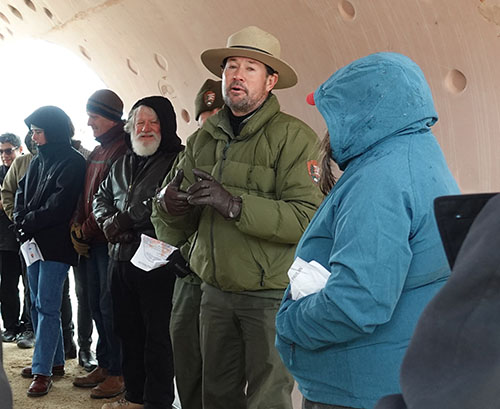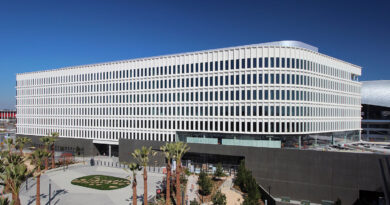National Park Pavilion
University of Southern California (USC) architecture students, USC faculty, and construction company representatives gathered in the California desert to inroduce the Carapace Pavilion in December. The innovative, sustainable, precast concrete project was erected at the Joshua Tree National Park in the summer.
Students and USC Architecture faculty who designed and built the structure joined Clark Pacific, which manufactured the structure’s precast concrete, and JVI Inc. and Cresset Chemical, which contributed materials. The Precast/Prestressed Concrete Institute’s (PCI) West chapter and the PCI Foundation hosted the celebration.

The Carapace Pavilion is a perfect example of sustainable construction and ties in with USC’s Assignment Earth initiative. The experimental enclosure was built with ultra-high-performance-concrete (UHPC), allowing the development of a shell that is only 2 inches thick without using any steel rebar. A new technology, UHPC uses less cement than traditional concrete, while supplying greater strength. The design proposes a 100-plus year life-span pavilion with zero maintenance, also contributing to sustainability.
“This is the first time that one of the PCI Foundation studios actually built anything like this,” said James Voss, president and general manager of JVI Inc., which supplied precast concrete connections. “When we started the PCI Foundation studios 20 years ago, we had a vision of engaging architecture and engineering students with direct hands-on work in precast concrete. We wanted them to get out of the classrooms and into the field to see how things are really made, actually getting their hands dirty and doing the work.”
“I was in the first architecture studio with professors Douglas Noble and Karen Kensek when this project got started,” said former USC architecture student Michael Gonzalez Haik. “We knew we were doing something valuable for Joshua Tree National Park, but I had no idea just how amazing this project would turn out.”
A new project with the National Park Services is already in the planning stages. “We will design, fabricate, and install 12 tiny homes, or Pocket Lodges, for seasonal park rangers at Joshua Tree,” said USC architecture professor Douglas Noble. “The challenge will be to make these small homes as comfortable as possible in this extreme climate, and to accomplish this without traditional air-conditioning.”
The Carapace Pavilion has received many awards, including from the Los Angeles chapter of the American Institute of Architects (AIA) and a 2022 PCI Design Award.


